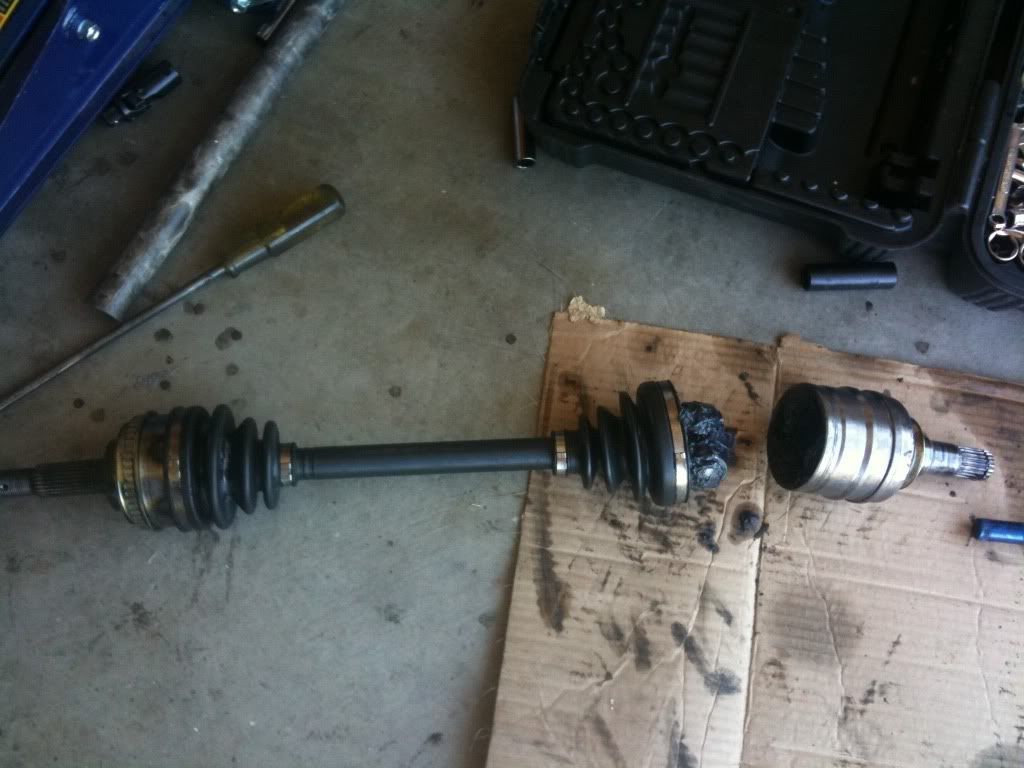Originally Posted By: The Critic
The end of it was not rested in the hub, but the shaft itself was fully supported. Considering that the shaft was supported, I don't see how having it in the hub (or not) would make any difference?
I'm not sure I totally understand what you're asking, so I'll offer this extensive ramble:
If it's in the hub with either the ball joint, tie-rod end, or strut unattached to the steering knuckle, then it could come apart, and the weight of the steering knuckle and anything still attached - especially the control arm - might even contribute to that. But once all of those things are together, the maximum distance from the hub to the transmission, in any cornering or suspension position, is short enough that there isn't enough room to pull the yoke out of the cup. The yoke of the inboard CV joint is free to move laterally in and out of the cup; the only thing holding the shaft/yoke to the cup is the boot, and that is not intended to be a structural member. In operation, it is simply held in place by virtue of not having enough room for the yoke to fall out of the cup. I've never even removed the inner cup from the transmission if I only need to change the boots. I just cut the band, pull the axle out, and clean and grease the cup in place before re-installing the cleaned and re-booted shaft.
All I'm saying about the lack of support is that there had to be some force to pull it apart, but maybe it didn't take much due to a poorly-clamped band. I've been careless with the forces I put on those shafts in the past (especially when they're old ones that are being replaced or re-booted) and never had any come apart so, if you were somewhat cautious with it, the band probably was just poorly clamped from the factory.

